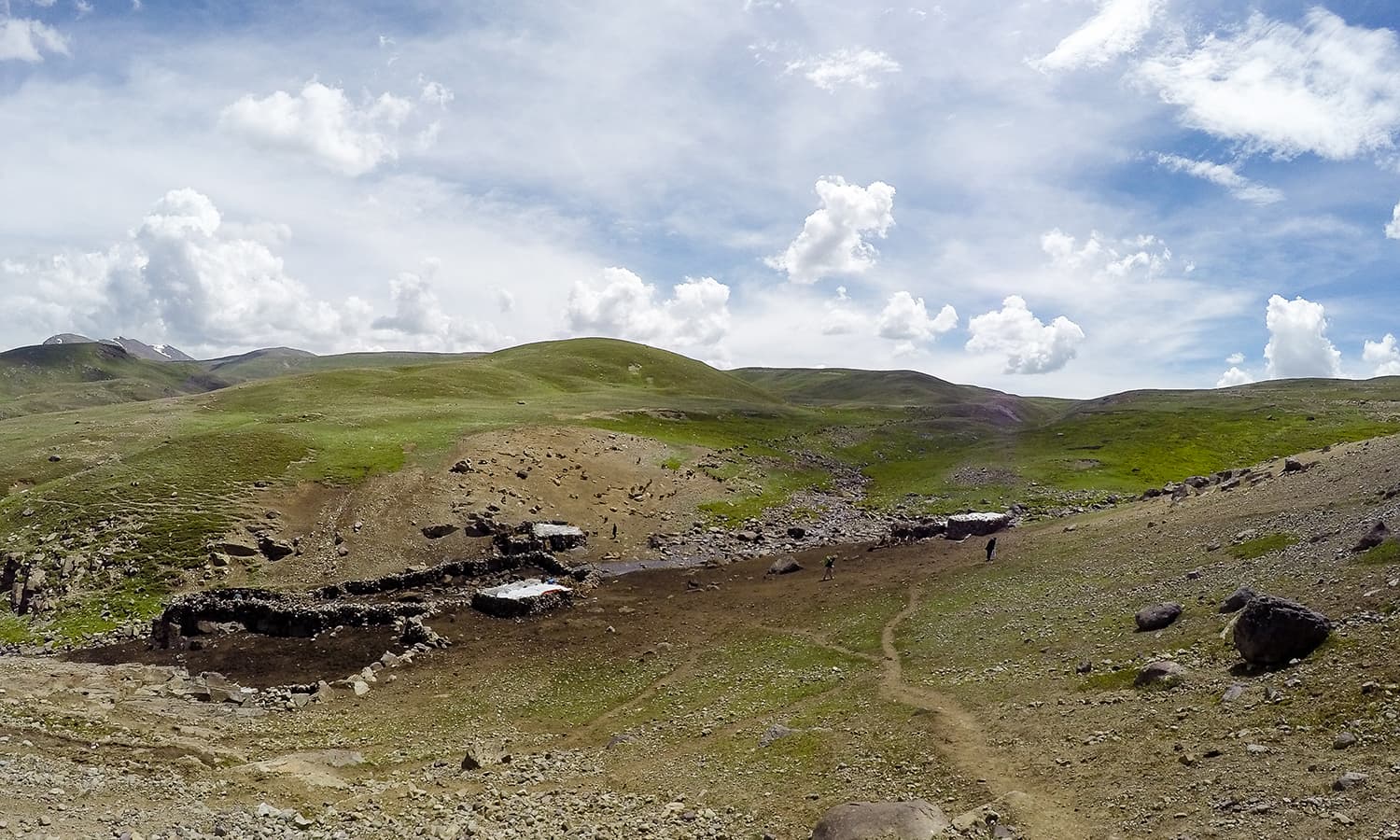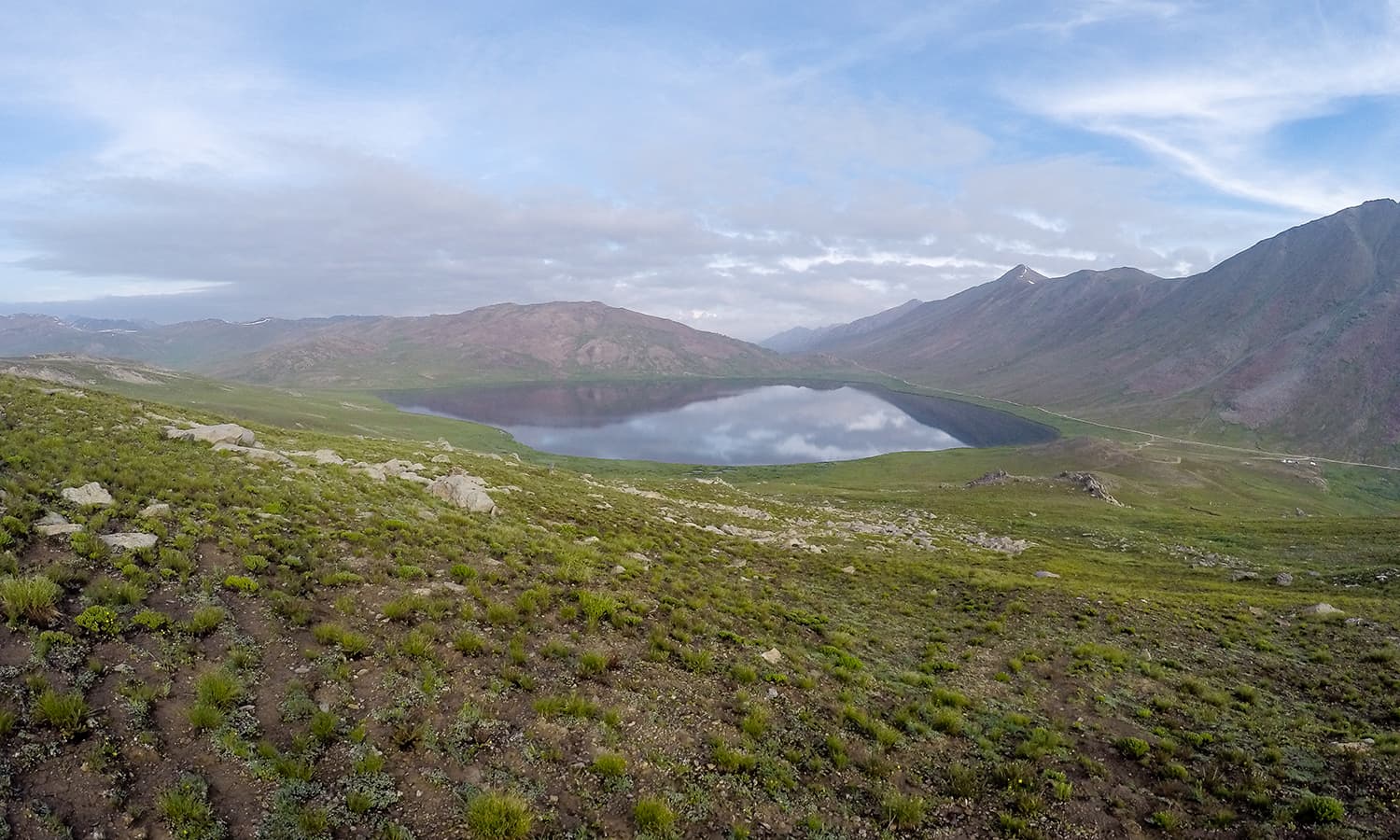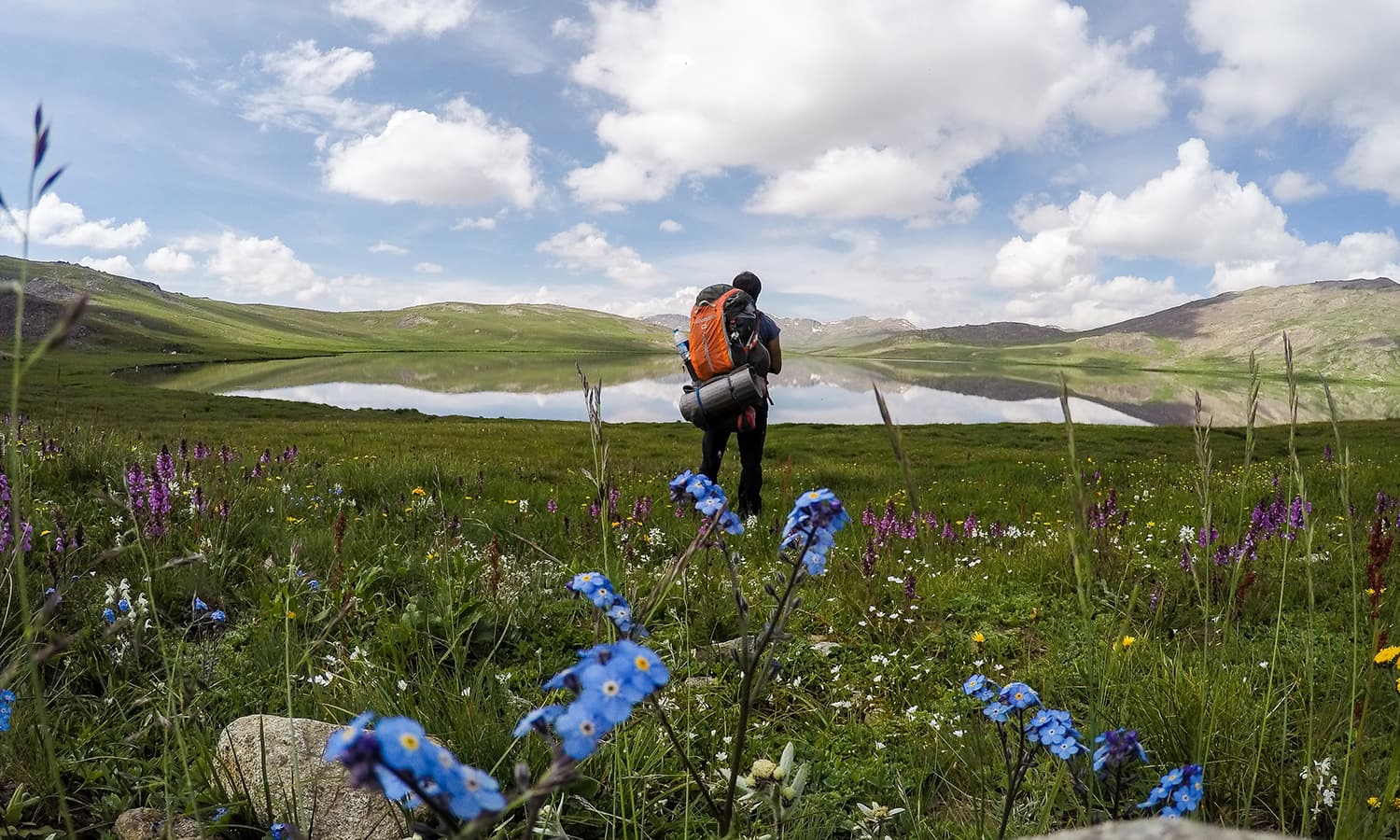My search for the elusive ‘giant’ of Deosai
I first came across the name "Land of the Giant" in a blog post. It had never occurred to me before that Deosai could have anything to do with a deo (giant). I decided to embark on a trip hoping to spot the giant(s) that inhabit this beautiful plateau above 4,000 metres.
Stocked with six omelette-paratha rolls I hoped they would be enough to last me for my two-day camping trip in Deosai.
I was glad I didn't need to carry any water as Deosai has ample fresh water springs (though I had never imagined that dirty diapers would greet me at one of these). If that wasn't bad enough, plastic bottles and wrappers were liberally scattered across the beautiful plateau.

My backpack — replete with a tent, sleeping bag, some food and gear — was a backbreaking 20 + kilos. Since I intended to trek out of Deosai to Chilam, economising on weight was imperative.
A God-sent college friend based in Skardu organised a jeep ride for me to Deosai. The trip from Skardu to the entrance of the Deosai National Park took about 1.5 hours.




A bored-looking wildlife official met us at the gates. After collecting the entrance fee of Rs40, he handed me a pamphlet, which had some useful information about the national park, and let us in.
The doorway into the land of the giant belied the beauty that would be sitting atop, higher than the slopes we were to climb. The jeep grunted and groaned as it clambered up the narrow and winding track, wedged between the mountains, following the course of the river that raged below.
Once atop, the narrow track opened up into a endless expanse of beautiful unhindered green plains, peppered with purple, yellow, blue and white flowers.
Fast flowing streams cut across the landscape — my vision only hindered by beautiful snow-laden mountains in the backdrop.


The first sign of habitation we encountered was a small shack-turant (read: khokha) near Deosai Top (also known as Ali Malik Mar), close to which was a Gujjar encampment.
And who knows their milk better than a Gujjar himself? Yours truly.

We settled for some doodh patti chai and witnessed the Gujjars' butter-making skills firsthand using goatskins.
Every summer, Gujjar nomads travel from Punjab to these lush green pastures to fatten their herd. Rumour has it that they have to pay a small fee for each animal they bring to graze.
Hailing from a Gujjar family myself, it was an interesting encounter with my distant kinsfolk, who had decided to stick to the trade rather than settle in the cities.

I was envious of their life style, overwhelmed by the beauty and magnitude of this never-ending, green expanse they had decided to call home for the summers.
An hour later, we reached Bara Pani where there is a Wildlife Project encampment. This was one of the places I had in mind to set camp for the night, but it meant that I would have a very long and arduous trek the next day to reach Chilam.

One of the wildlife officials suggested I continue all the way up to Sheosar Lake close to where there was also a bear sanctuary.
Could the elusive deo or deos (if there were more than one) of Deosai be a Himalayan "brown bear", I wondered.
By the time I reached Sheosar lake, it was 4pm. As the sun began to set, the few local tourists I had seen earlier slowly disappeared.
I quickly ditched the idea of pitching my solo tent by the lake, as the thought of a brown bear ripping it apart was too horrifying.

Seeing a khokha owner's tent pitched a few hundred metres away from the lake, I decided to pitch mine there too. The khoka owner Aslam showed me a white flour trail at the back of his mess-tent that led up the hill.
The culprit, he was positive, could only have been a brown bear with enough strength to move the rocks lining the base of his tent.
He wasn’t taking any chances with his supplies tonight and decided to sleep in the mess tent — the theory being if a bear smelled a human inside, it would go away.
I wasn’t sold on the wisdom of his theory, considering the countless people who have been mauled by brown bears elsewhere in the world. Having recently watched "The Revenant", I was convinced he had got it all wrong.
At night, the stars had the sky completely alit, while the moonlight illuminated the distant white mountain tops.
After taking a stroll around the lake, I settled into my sleeping bag, hoping to wake up just before sunrise, and go searching for the brown bear if it hadn't already found me by then.
Following an hour of sleep, I woke up shivering. The temperature had hit sub-zero and my sleeping bag with an extreme rating of -7°C was proving inadequate.
A slight headache, symptomatic of altitude sickness, which usually hits the hardest at night, had crept in too. I jumped into my base layer, fleece and woollen socks and snuck back into my sleeping bag, only to wake up minutes later to the sound of something ruffling outside my tent.
The first thought that struck me had my senses fully heightened. Could it be the bear that had ransacked Aslam's mess-tent last night?
I wasn’t taking any chances. The vision of a bear paw tearing through my tent, lunging for my paratha rolls and attacking my limbs was enough for me to grab my jacket, torch and jump into my boots.
Sensing the direction from where the sounds were coming, I opened the tent's zip on the opposite side, switched on my torch and jumped out.

Despite flashing the light frantically in all directions, I couldn’t spot any thing. Just as I was about to head back to the tent, I noticed a horse grazing at a few metres' distance.
Feeling relieved and disappointed at the same time, I shooed him away and meekly made my way back in.
Repeating the same episode twice that night around 2am and 4am, I gave up on the idea of sleep.

The sky was already turning crimson, the sun eager to pierce the early-morning sky with its rays. I looked at my map and decided to trek over to the summit of a peak, overlooking what is marked as a bear sanctuary.
Its visibility was good enough to spot a bear from a few hundred metres away, giving me enough of a headstart in case I had to make a run for my life.
The trek to the summit took longer than I had expected; the clear air and unending expanse of green had deceived me into thinking it was closer than it really was. By then, the sun had already burst through the sky.
With the temperature shooting up quickly, my hopes of spotting a deo, that I thought to be the brown bear, dwindled.

Feeling inadequately equipped to spend another night on my own and running low on food, I decided to break camp and trek to Chilam.
Determined to return another day.
— All photos by author




